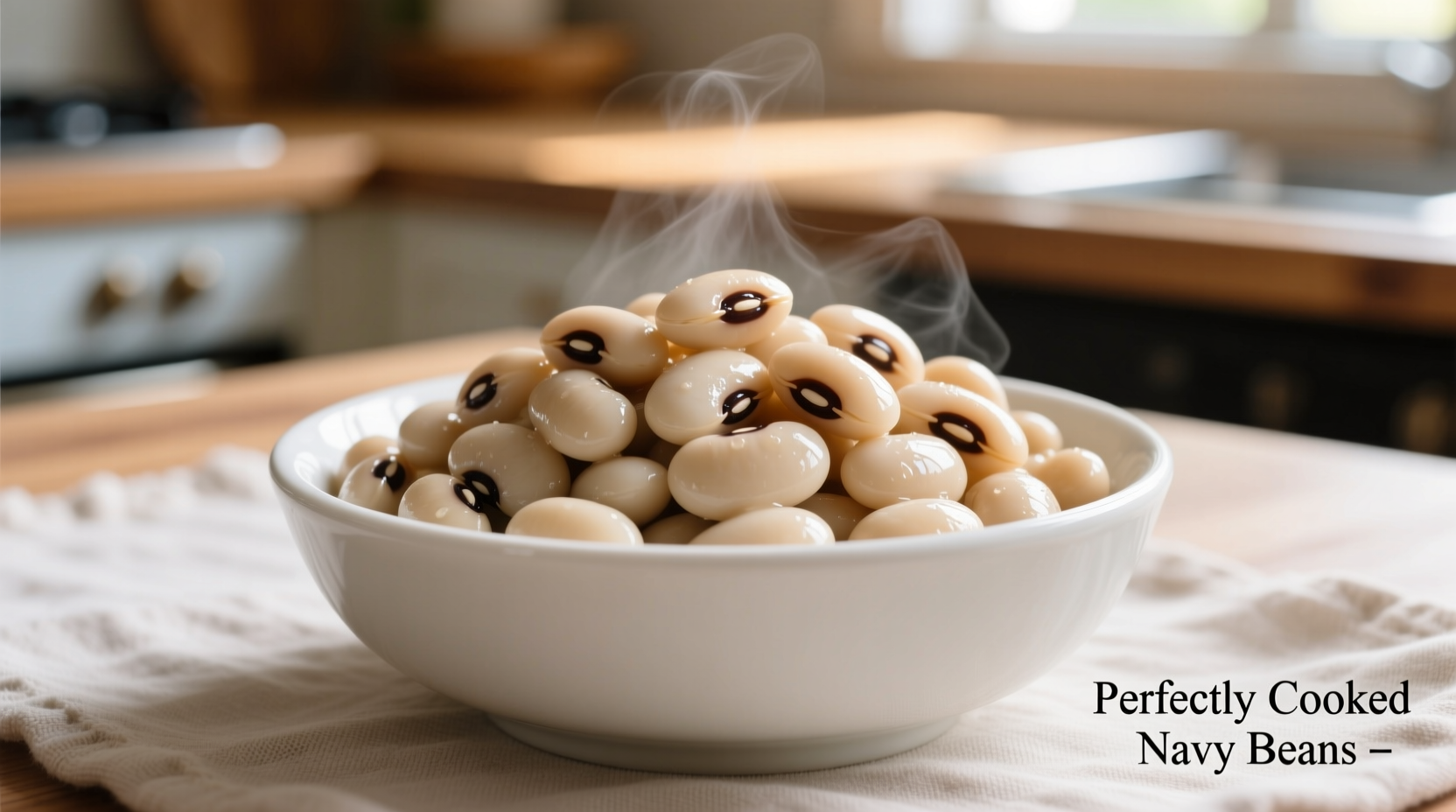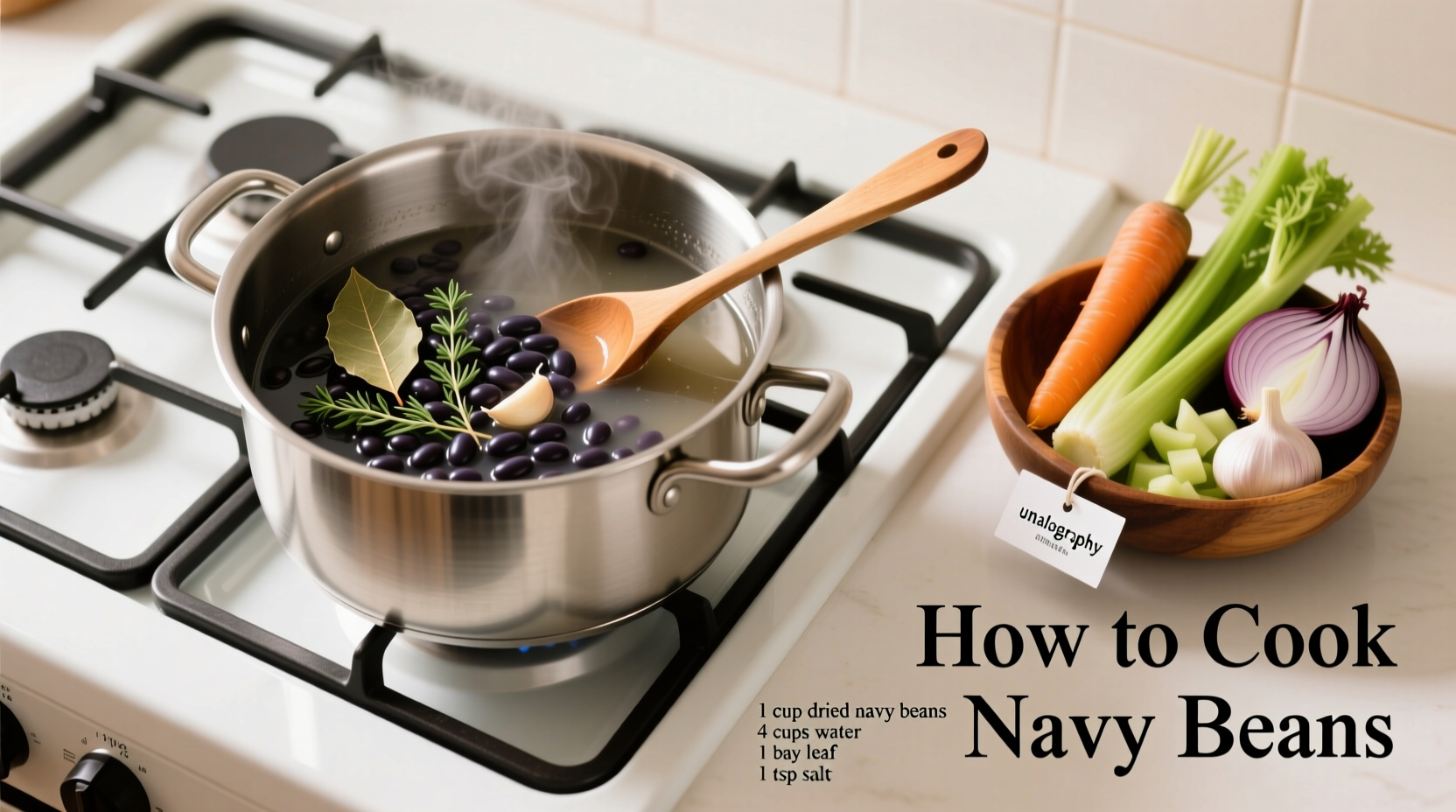Master Navy Bean Cooking: Simple Methods for Perfect Results Every Time
Nothing beats the creamy texture and mild flavor of properly cooked navy beans in soups, stews, and side dishes. Whether you're preparing classic baked beans, creamy cannellini soup, or hearty bean salads, getting the cooking process right makes all the difference. In this guide, you'll learn professional techniques for cooking navy beans using multiple methods, plus essential tips to avoid common pitfalls that lead to tough, unevenly cooked beans.
Why Navy Beans Deserve Special Attention
Navy beans (Phaseolus vulgaris) are small, oval-shaped white beans with a delicate flavor and smooth texture when cooked properly. Unlike some larger beans, navy beans cook relatively quickly but require careful attention to water levels and timing. Improper preparation can result in beans that remain hard in the center or become mushy on the outside while still firm inside.
Understanding Navy Bean Preparation Options
Before cooking, navy beans require preparation to reduce cooking time and improve digestibility. You have three main options:
- Overnight soak: Cover beans with 3 inches of cold water and soak 8-12 hours
- Quick soak: Boil beans for 2 minutes, then let stand covered for 1 hour
- No soak: Skip soaking but increase cooking time by 25-30%
According to USDA food safety guidelines, soaking beans reduces oligosaccharides that cause digestive discomfort. The Food Safety and Inspection Service recommends discarding soaking water and using fresh water for cooking to maximize digestibility.
| Preparation Method | Time Required | Cooking Time | Digestibility |
|---|---|---|---|
| Overnight Soak | 8-12 hours | 60-75 minutes | ★★★★☆ |
| Quick Soak | 1 hour 10 minutes | 70-85 minutes | ★★★☆☆ |
| No Soak | None | 90-120 minutes | ★★☆☆☆ |
Stovetop Cooking Method: Step-by-Step
The traditional stovetop method gives you complete control over the cooking process:
- Sort and rinse 1 pound (about 2 cups) dried navy beans, removing any debris
- Soak using your preferred method, then drain and rinse thoroughly
- Place beans in a large pot with 6 cups fresh water (3:1 water-to-beans ratio)
- Add aromatics like onion, garlic, or bay leaves if desired
- Bring to a gentle boil, then reduce heat to maintain a steady simmer
- Cover partially and cook for 60-90 minutes, checking tenderness after 60 minutes
- Add 1-2 teaspoons salt when beans are halfway cooked to season properly
- Remove from heat when beans are tender but still hold their shape
Adding salt too early was once thought to toughen beans, but recent research from the Cornell University Food Venture Center shows salt actually helps water penetrate the bean's structure. However, avoid adding acidic ingredients like tomatoes or vinegar until beans are fully tender, as acidity prevents proper softening.

Alternative Cooking Methods
For those with different kitchen tools or time constraints, these alternative methods work well:
Slow Cooker Method
After soaking, place beans in your slow cooker with 5 cups water per cup of beans. Cook on HIGH for 3-4 hours or LOW for 6-8 hours. The slow cooker's gentle heat produces exceptionally creamy beans ideal for soups and dips.
Pressure Cooker Method
With soaked beans: 15-20 minutes at high pressure, followed by natural release for 15 minutes. For unsoaked beans: 25-30 minutes at high pressure. This method reduces cooking time significantly while maintaining texture.
Avoiding Common Navy Bean Cooking Mistakes
Even experienced cooks make these navy bean preparation errors:
- Insufficient water: Navy beans absorb significant liquid; maintain at least 2 inches above beans
- Boiling too vigorously: A rolling boil breaks beans apart; maintain a gentle simmer
- Adding acid too early: Wait until beans are tender before adding tomatoes or vinegar
- Underseasoning: Beans need more salt than you might expect for proper flavor development
- Skipping the soak: While possible, skipping soaking often results in uneven texture
Storing and Using Cooked Navy Beans
Properly stored cooked navy beans maintain quality for:
- Refrigerator: 4-5 days in airtight container with some cooking liquid
- Freezer: 6 months in portion-sized containers
The USDA FoodData Central confirms that cooked navy beans provide 15g protein and 19g fiber per cup, making them an excellent plant-based protein source. Use them in:
- Creamy navy bean soup with herbs
- Classic Boston baked beans
- White bean dips and spreads
- Salads with vinaigrette dressing
- Vegetarian burgers and patties
Troubleshooting Your Navy Bean Results
Encountering issues with your cooked navy beans? Try these solutions:
- Beans still hard after cooking: Older beans may need longer cooking; check water level and add more boiling water if needed
- Beans breaking apart: Boiling too vigorously or adding salt too early can cause this
- Excess foam: Skim foam during first 10 minutes of cooking for clearer broth
- Dull flavor: Add salt incrementally during cooking rather than all at the end
Remember that bean age significantly affects cooking time. Beans stored longer than 12 months may never achieve ideal tenderness. The University of Nebraska Extension recommends using dried beans within one year for best results.











 浙公网安备
33010002000092号
浙公网安备
33010002000092号 浙B2-20120091-4
浙B2-20120091-4